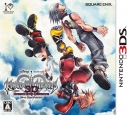Mr Khan said:
Required peripheral + Late in console's life. The only sales target Skyward Sword had to look out for was Majora's Mask. |
My thoughts as well, but it didn't stop the misdirected blame.
| happydolphin said: This is an excellent question and here is my take on it. Nintendo is balling Nintendo currently is balling with most of the titles they make.They are in no rush for cash after they fix the profits issue that bothered them minorly in the past few quarters. When everything is back to normal, they will be balling again. Flagships they should not touch It is my belief that there are certain games Nintendo should not harm or touch when it comes to artistic depth, and mainline console Zelda is one of those games. Galaxy (e.g. 3D Mario) was one of those games, but I can make an exception for 3D world, which looks amazing. Prime is the last of those games. F-zero and Starfox as well, but to a lesser degree. With all the money Nintendo makes from their more casual and sales-inducing games, these are the 3 games they should not touch. Sales versus Artistic integrity, the heart of the question In your OP you argue that TP had better sales due to a more realistic style. You will argue that going for a more artistic style is to go for higher sales, but I believe that that thinking is flawed and here is why. It is my understanding that when Nintendo made TP, they put as much artistic heart as they did with WW. The only difference is that they veered toward a more mature direction. The sales that followed were a result of people connecting with that choice. It's a matter of causality from TP to sales, and not from sales to TP. However, the paradox of the observer comes in. Now that we know that a realistic style garners more sales, could we argue that going for that style is compromising artistic integrity? I believe nobody knows... In the end, we can best judge not by the style chosen, but by the depth. For contrast, there are many games with a realistic style but severely lack artistic integrity. Could you name one? I know I could. So long as that does not happen to Zelda, then can you really bash the direction because it sell well? Think about it. Why sales can matter When following the documentary on the MN9 kickstarter project, one thing I learned is that Keiji Inafune is always on the lookout to see what connects with his fans. Does it mean he's compromising on artistic integrity? What if I told you that he can stay true to his vision, all the while molding it to the pleas of the fans, so as to make what connects with them too? Can both be possible? I think so. Do you really want to make something that doesn't resonate with your fans simply to dwelve into asepticized art? I think art is always a bit of both how can I make this great, and how can I make it enjoyable, especially when it comes to art in entertainment. That's my two cents. Great thread. |
Thanks for sharing your thoughts. Regarding the underlined, I didn't mean to imply that I thought Nintendo chose TP's art style specifically to target a larger audience, nor that they are incapable of making a game in that style as visually unique and enticing as Wind Waker. Regarding appealing to fans, having greater sales doesn't mean the series' fans liked it more. There are at least a couple million people who bought Twilight Princess, yet bought neither Wind Waker nor Skyward Sword -- are they fans of the series, or did they jump on the realistic-graphics bandwagon? It's impossible to know for sure. But I think someone who lets the visual style alone come between them and a series they love for its gameplay has the wrong approach -- just my opinion. And as a fan of the series myself, I want the Zelda team to make the game they want to make. They've never done wrong by me, so I won't tell them how to do their job.











































































